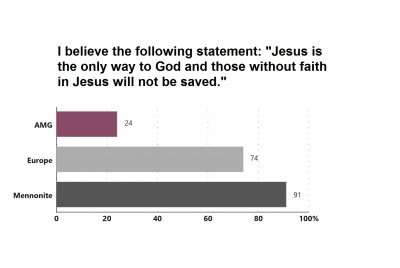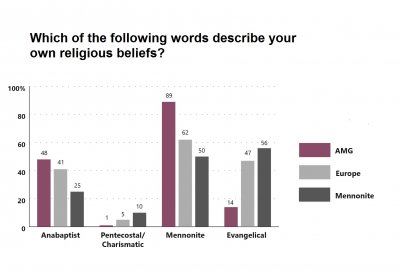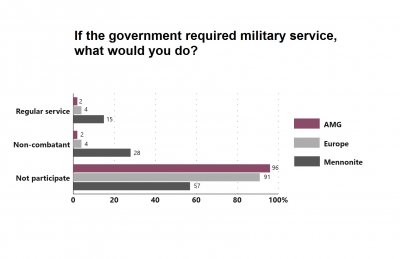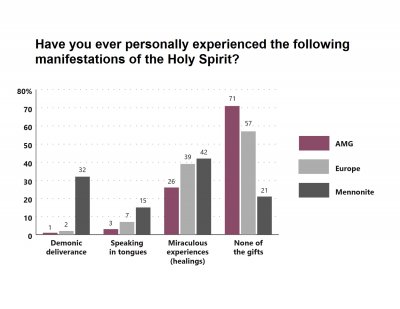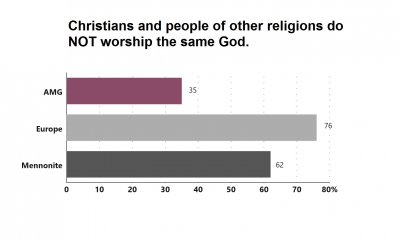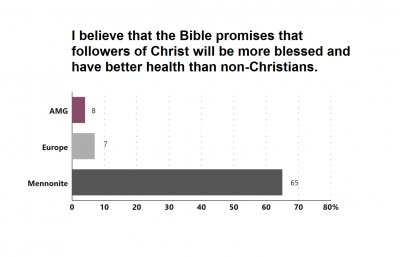Europe
Arbeitsgemeinschaft Mennonitischer Brüdergemeinden (Germany)
Congregations: 13 | Members: 1,600
Demographic Profile
- Sixty-nine percent of congregations and 23 percent of members in the original sample participated in the GAP.
- The average size of congregations in the Arbeitsgemeinschaft Mennonitischer Brüdergemeinden is 123 members.
- Of those who participated in the GAP, fifty-seven percent were women and 43 percent were men.
- Twenty-nine percent of members live in rural communities and 70 percent in urban areas.
- The average age of respondents is 45 years and 43 percent of women are within childbearing age (18-45 years).
- Sixty-seven percent were baptized in a congregation of the Arbeitsgemeinschaft
Mennonitischer Brüdergemeinden. - Thirty-nine percent are professionals, 31 percent are manual laborers, 16 percent are homemakers, and 12 percent are in agricultural occupations.
- Seventy-seven percent have completed high school and 30 percent are college graduates.
- Sixty-one percent grew up in a home where neither parent was a member of the Arbeitsgemeinschaft Mennonitischer Brüdergemeinden.
History
Emerging out of Mennonite Central Committee’s relief efforts in Europe following World War II, the first Mennonite Brethren church was established in Neuwied in 1950. The early members were Russian and Polish Mennonites living in West Germany. Over the next sixteen years, two more congregations were formed—one of German believers and one of Mennonite Brethren returning to Germany from South America. Beginning in the 1960s North American missionaries accompanied the church in evangelism and church-planting. From the mid-1970s through the 1990s, Mennonite Brethren immigration to Germany from the Soviet Union significantly increased the church’s membership.

The Conference of Mennonite Brethren Churches in the Federal Republic of Germany (predecessor to AMBD) was a way for these churches to connect and partner with one another. From 1960 to 1980 members and delegates from these German and Austrian congregations met for an annual Pentecost-Faith Conference. After 1982, the conference continued as a biennial gathering. Although they have also sent missionaries abroad in the past, the AMBD currently focuses on church planting in Germany and on strengthening mutual support among the churches of the conference.
Challenges
The AMBD had less participation from local congregations than they had expected, due to lack of interest in the survey. It also took longer to obtain responses than anticipated.
Graphs
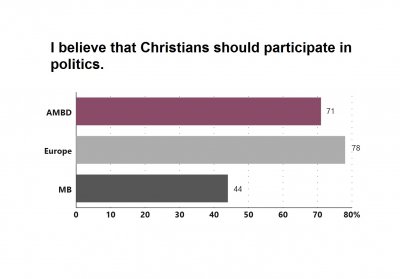
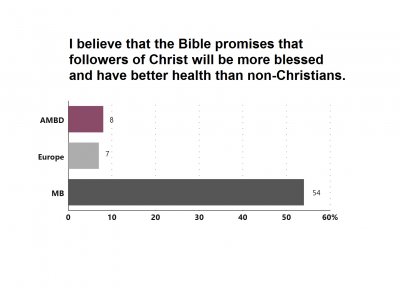
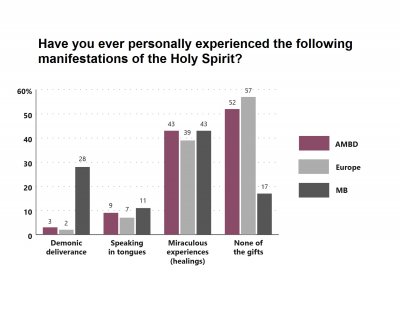
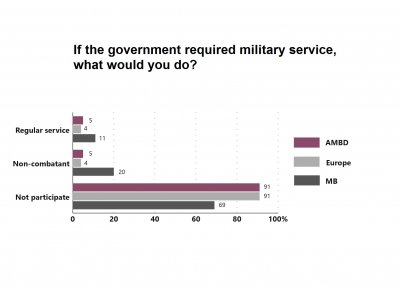
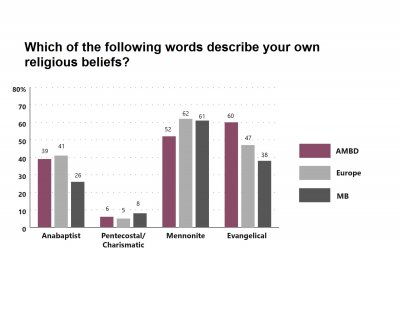
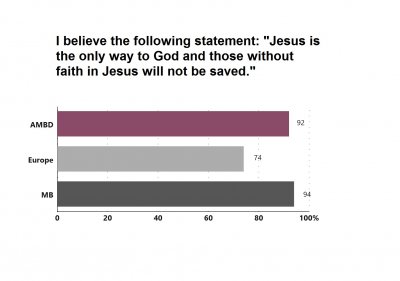
Arbeitsgemeinschaft Mennonitischer Gemeinden in Deutschland
Congregations: 52 | Members: 5,166
Demographic Profile
- Fifty-six percent of congregations and 5 percent of members in the original sample participated in the GAP.
- The average size of congregations in the Arbeitsgemeinschaft Mennonitischer Gemeinden in Deutschland is 99 members.
- Of those who participated in the GAP, fifty-three percent were women and 48 percent were men.
- Forty-four percent of members reported living in rural communities and 56 percent in urban areas.
- The average age of respondents is 63 years; fifteen percent of women are within childbearing age (18-45 years).
- Sixty-eight percent of respondents are married, 9 percent are widowed, 6 percent are separated or divorced, and 4 percent are single.
- Forty-two percent of respondents are professionals, 13 percent are engaged in agriculture, 21 percent in manual labor, and 20 percent are homemakers.
- Seventeen percent have not completed a high school education, 30 percent have achieved a high school diploma, and 54 percent are college graduates.
- Sixty-one percent grew up in a home where one or both parents was a member of a congregation in the Arbeitsgemeinschaft Mennonitischer Gemeinden in Deutschland.
- Sixty-five percent of respondents were baptized in a Arbeitsgemeinschaft Mennonitischer Gemeinden in Deutschland congregation and 36 percent in another church.
History
The Arbeitsgemeinschaft Mennonitischer Gemeinden in Deutschland (AMG) was founded in 1990, a successor to the earlier joint task force of the Verband and Vereinigung Mennonites. Three regional associations representing 52 congregations came together as the founding members of the AMG: the Association of German Mennonite Churches (VDM) in the North, the Association of Southwest Mennonite Churches (ASM) in the Southwest, and the Association of German Mennonite Communities (VdM) in the South. The AMG unites the churches in cooperation and common initiatives, while respecting the individual autonomy of the member congregations and associations within AMG’s structure.
Committed to ecumenical efforts and relationships, the AMG is a member of the World Council of Churches and other regional ecumenical groups. The AMG supports many institutions and projects, including a voluntary service program for youth, the Mennonite Peace Center in Berlin, and a volunteer cooperative providing services and care to the elderly.
Graphs
